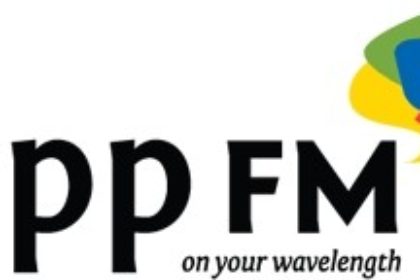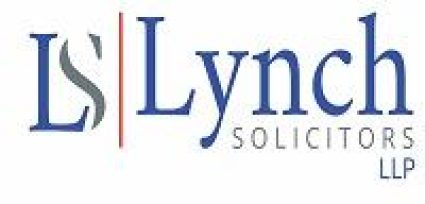
Tipp FM Legal Slot – 20th May 2015 – Monthly Wrap Up – Debt Solutions: Insolvency.
On Tipp FM, John M. Lynch spoke to Seamus Martin on ‘Tipp Today’ about accessing Insolvency Arrangements
[soundcloud id=’206362098′]The Insolvency Act was signed into law on St. Stephen’s Day 2012 and since then various officials have been appointed, offices opened, legislation introduced, judges appointed, and statutory machinery put in place. Despite being brought in almost two and a half years ago, it is still a relatively new and underdeveloped system.
The model set up was essentially an attempt by the State to deal with the large amount of individual debt through a private scheme managed by private individuals, Personal Insolvency Practitioners, supervised by a public body, the Insolvency Service of Ireland, and implemented by means of Insolvency Arrangements.
There are three Arrangements under the Insolvency Regime:
- Debt Settlement Arrangement (DSA)
- Personal Insolvency Arrangement (PIA)
- Bankruptcy
This represented a major initiative in the attempt to tackle the horrific effects of the annihilation of the Celtic Tiger.
The Bank Veto
In the current situation, banks can potentially block a debtor from accessing a Personal Insolvency Arrangement. This is so, because 65% of creditors must accept the Arrangement before it goes through.
This veto generated a stream of criticism and strong political pressure for changes to the system.
Suggestions for reform included having an appeals mechanism where if the creditor refuses an arrangement an independent body would review that decision or else by allowing the courts get involved if this happened.
Finally, on Wednesday, the 13th of May 2015, some 2 ½ years later, the Government announced a removal of the veto as part of its new package to deal with mortgage arrears.
The proposed changes would allow an option for the court to review the Arrangement and overturn a bank veto.
Referred to as “a critical component of the package”, the Government hopes that this change will get the new Regime moving and help people get back to solvency.
How does Insolvency work?
Being burdened with debt is an extremely stressful time.
The Insolvency code is a mechanism by which people can come to realistic arrangements to tackle insolvency and return to normality.
The first port of call for those who are insolvent – cannot meet their debts as they fall due – is to contact a Personal Insolvency Practitioner (PIP) who will assess their situation and advise on which arrangement, if any, would be suitable.
The PIP acts as a go- between for the debtor, the creditors, the Insolvency Service and the Courts.
The second action people must take is to gather all information. For everyone involved it is essential that a firm grasp is had on the current situation to properly advise and take up the right course of action.
One of the cornerstones of the application for Insolvency is the Prescribed Financial Statement (PFS). The purpose of the PFS is to give an accurate written account of all assets, debts, income and expenditure so that a true reflection of the financial position of the person seeking relief is outlined. This will enable the PIP to recommend different options for dealing with outstanding debts and to recommend which arrangement, if any, would be suitable.
The PFS would form the basis of calculating what repayments will be made to creditors and what portion of monies can be kept to maintain a reasonable standard of living.
The statement will contain a Statutory Declaration which must be signed by the applicant and witnessed by a Notary public, Commissioner for Oaths, Peace Commissioner or a practicing Solicitor. It will be an offence to sign this declaration without full disclosure or if any of the details in the Prescribed Financial Statement are incorrect or misleading.
A considerable amount of work can be involved in preparing the PFS and vouchers or receipts for all of the details provided will be required.
What if I have no income?
Initially there was much debate about the minimum standard of living that people entering into insolvency arrangements are entitled to. I have found that many clients who I have been dealing with were living below the reasonable standard of living. However, there are many situations where people have assets and with the proper arrangement, solvency can be achieved. Furthermore with the reduction of application fees for arrangements, it is now less costly than ever before to avail of the opportunity to be debt free.
Are Insolvency Arrangements dealt with in the courts?
There are insolvency cases that go before circuit court judges who are specially appointed to deal with them. With the abolition of the veto we could expect to see more activity in the courts.
By way of comparison bankruptcy is dealt with by the High Court which is more expensive and it could be worth looking at dealing with it in the Circuit Court.
I want to deal with my debt, what should I expect from a Personal Insolvency Practitioner?
One of the first things a PIP will do is get a Protective Certificate for those who are struggling financially. This would stop any creditors pursuing them for a limited amount of time to allow time for proposals and negotiations.
Personal Insolvency Practitioners will:
- Help those who are looking for relief under the Act in preparing a detailed financial statement;
- Use this information to advise on what debts can be included and put together proposals based on the individual circumstances ;
- Submit proposals to their creditors once the various options and consequences are discussed ;
- Negotiate with the creditors to find a solution which both parties can agree on;
- Organise a meeting of creditors to vote on the proposals;
- Organise the approval of any agreed arrangements with the courts and the registration with the Insolvency Service of Ireland.
A detailed plan will be given to those availing of relief under the Act setting out their obligations and specifying the time frame within which these obligations are to be met. The practitioner will also be responsible for monitoring the payment arrangements for their duration.

